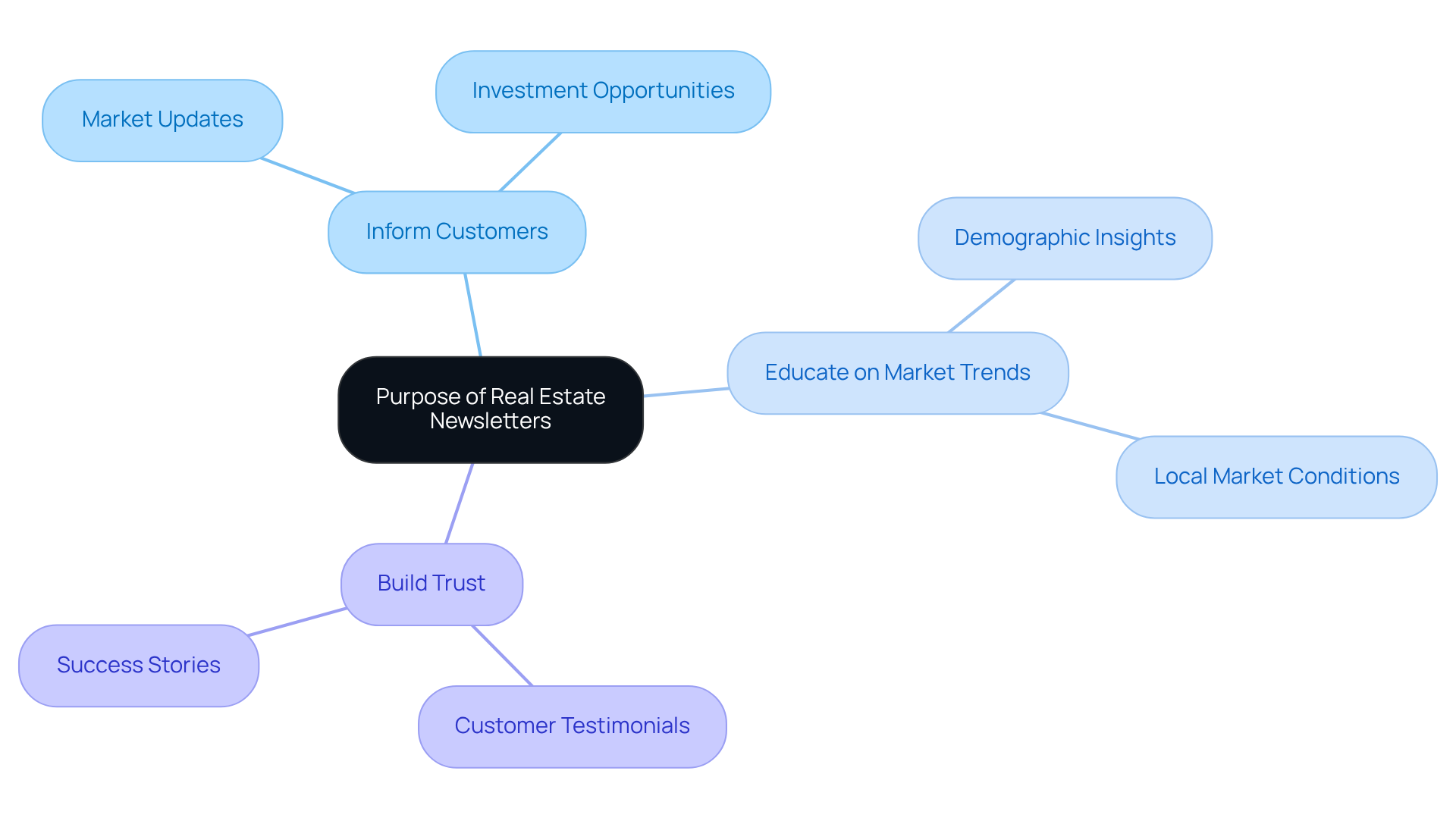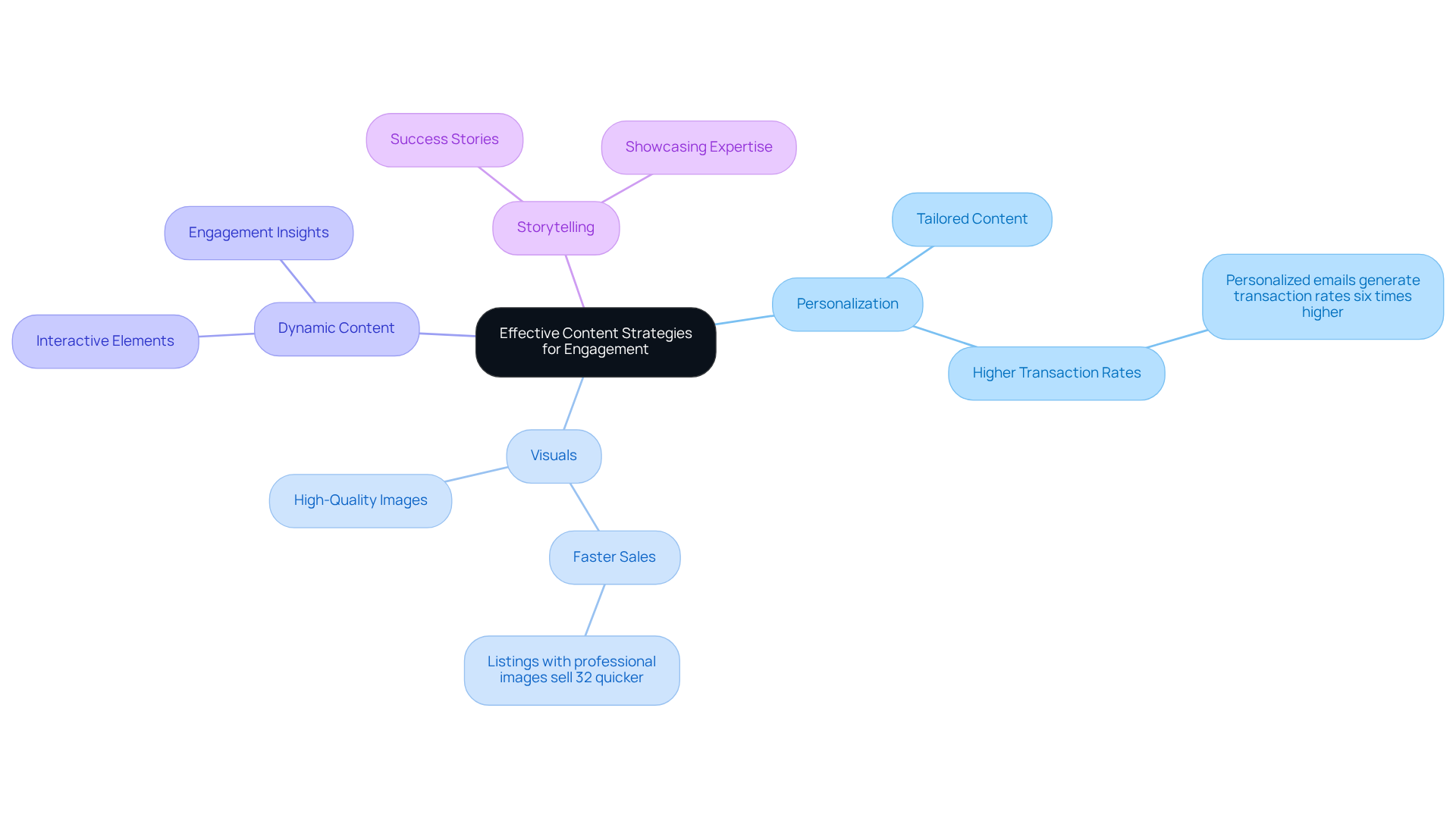Overview
Key practices for real estate newsletters aimed at clients encompass:
- Defining the newsletter's purpose
- Implementing effective content strategies for engagement
- Evaluating performance through metrics and client feedback
Tailoring content to subscriber preferences, utilizing visuals, and incorporating interactive elements are essential strategies that can significantly enhance engagement.
Moreover, tracking metrics such as open rates and gathering client feedback ensures that newsletters remain relevant and valuable to the audience. These practices not only bolster client relationships but also position real estate professionals as trusted authorities in the field.
Introduction
Crafting a successful real estate newsletter is a pivotal strategy for professionals seeking to connect with clients and cultivate enduring relationships. By effectively informing subscribers about market trends, investment opportunities, and local updates, these newsletters function not merely as a communication tool but as an essential resource for informed decision-making. Yet, in a landscape saturated with information, how can real estate agents ensure their newsletters distinguish themselves and resonate with their audience? By exploring key practices, agents can unlock the potential for heightened engagement and loyalty, ultimately reshaping how clients perceive and interact with the real estate market.
Define the Purpose of Real Estate Newsletters
The primary objective of a property update is to inform and educate customers about market trends, investment opportunities, and relevant news. This encompasses updates on local market conditions, new property listings, and insights into demographic shifts impacting the housing market. For example, in March 2025, new home sales reached 724,000 units, while pending home sales saw a notable increase of 6.1%, underscoring the market's dynamic nature. By clearly defining the publication's aim, real estate professionals can tailor their content in real estate newsletters for clients to meet the specific interests and needs of their audience, ensuring that readers derive value from each edition.
For instance, a publication might focus on providing monthly market evaluations, aiding customers in making informed decisions about buying or selling properties. Furthermore, the inclusion of customer testimonials and success stories can enhance credibility and foster trust among subscribers. Positive feedback from Zero Flux's community highlights the clarity and accuracy of the information presented, reinforcing the significance of high-quality content. As the property market evolves in 2025, real estate newsletters for clients that prioritize education and relevance will serve as essential resources for client engagement and loyalty.

Implement Effective Content Strategies for Engagement
To create engaging content, real estate newsletters for clients should seamlessly blend informative articles with visually appealing graphics and interactive elements. Key strategies include:
- Personalization: Tailor content based on subscriber preferences and behaviors, enhancing relevance and connection. Research indicates that personalized emails can generate transaction rates six times higher than non-personalized ones.
- Visuals: Utilize high-quality images and infographics to break up text and effectively illustrate key points. Listings with professional images sell 32% quicker, underscoring the influence of visuals in estate marketing. As Sharad Mehta observes, "Initial perceptions are important, and high-quality photography and staging are crucial in property sales."
- Dynamic Content: Incorporate interactive elements like polls or quizzes to encourage reader engagement. This approach not only makes the newsletter more enjoyable but also provides valuable insights into subscriber interests.
- Storytelling: Share success stories or case studies that highlight the positive outcomes of real estate decisions. For instance, featuring a recent client who successfully navigated the market with the agent's guidance can showcase the agent's expertise and the value of their services.
By employing these tactics, real estate newsletters for clients can help publications develop a stronger bond with their audience, ultimately improving engagement and nurturing loyalty among members. In 2025, metrics suggest that publications concentrating on these aspects will experience enhanced open rates and click-through rates, rendering them an essential resource for property experts. According to external sources, email marketing converts 40% better than social media, emphasizing the effectiveness of these strategies.

Evaluate Newsletter Performance and Client Feedback
To effectively evaluate the performance of a property update, professionals must track essential metrics such as open rates, click-through rates, and audience retention. Utilizing tools like Google Analytics or dedicated email marketing platforms yields valuable insights into audience interactions with content. For instance, the average open rate for real estate newsletters in 2025 is projected to be around 34.23%, underscoring the necessity of optimizing content to capture attention. Moreover, with 63% of companies intending to decrease email volume based on customer engagement, it is crucial to concentrate on effective metrics to avoid overwhelming recipients.
Collecting customer feedback through surveys or direct communication provides qualitative insights into user preferences. A straightforward survey could inquire about favorite content types or topics that subscribers feel are underrepresented. This feedback loop not only enhances content strategies but also signals to customers that their views are valued, thereby promoting loyalty and engagement. As highlighted by industry specialists, integrating customer insights is vital for ongoing enhancement and can significantly improve the overall efficiency of publications. Furthermore, with 71% of consumers expecting personalized interactions, tailoring content based on client feedback becomes even more essential. This commitment to understanding subscriber needs can lead to a more engaged audience and improved newsletter performance.

Conclusion
Real estate newsletters serve as a vital communication tool, designed to inform and educate clients about market trends, investment opportunities, and relevant news. By clearly defining their purpose, real estate professionals can craft tailored content that aligns with the specific interests of their audience, ensuring that each edition provides valuable insights and fosters trust. As the market continues to evolve, the relevance and educational focus of these newsletters become increasingly crucial for maintaining client engagement and loyalty.
This article highlights three key practices to enhance the effectiveness of real estate newsletters:
- Defining the purpose
- Implementing engaging content strategies
- Evaluating performance through client feedback
Personalization, high-quality visuals, and interactive elements are essential for creating newsletters that resonate with readers. Furthermore, continuous evaluation of metrics and soliciting client feedback can significantly refine content strategies, fostering a more personalized experience that meets subscriber needs.
Ultimately, investing in well-crafted real estate newsletters not only strengthens the connection between professionals and their clients but also positions these publications as indispensable resources in an ever-changing market. By embracing these best practices, real estate professionals can elevate their newsletters, ensuring they not only inform but also engage and inspire their audience to take action.




